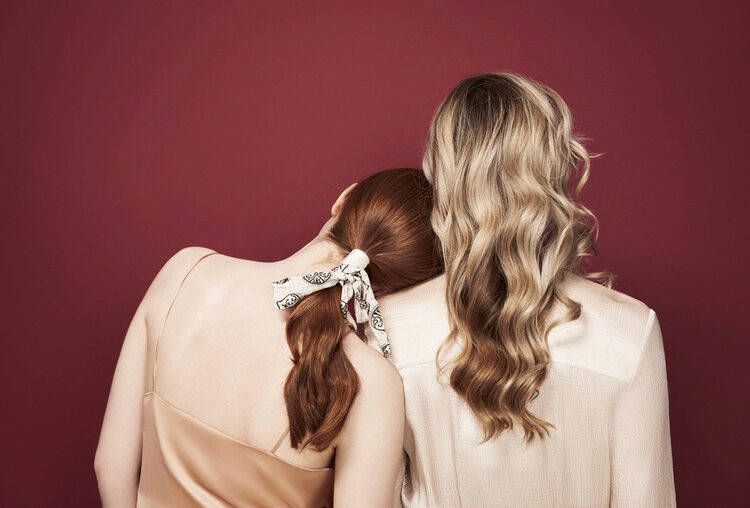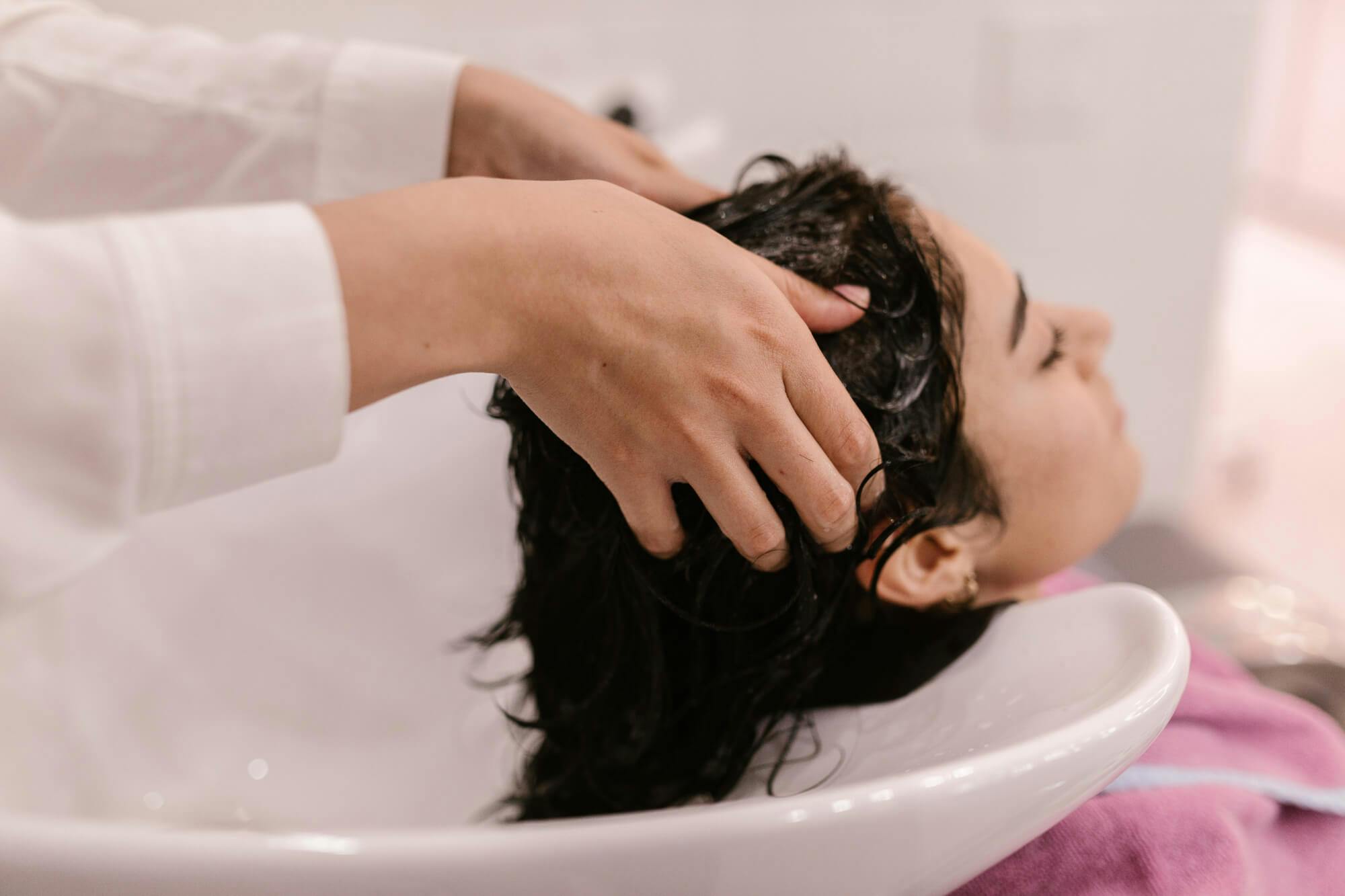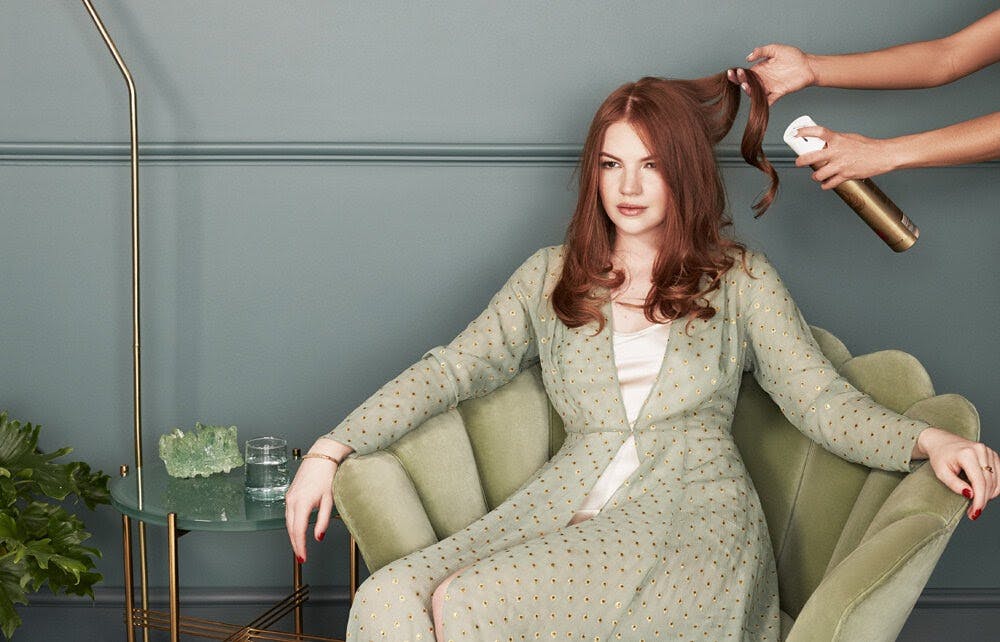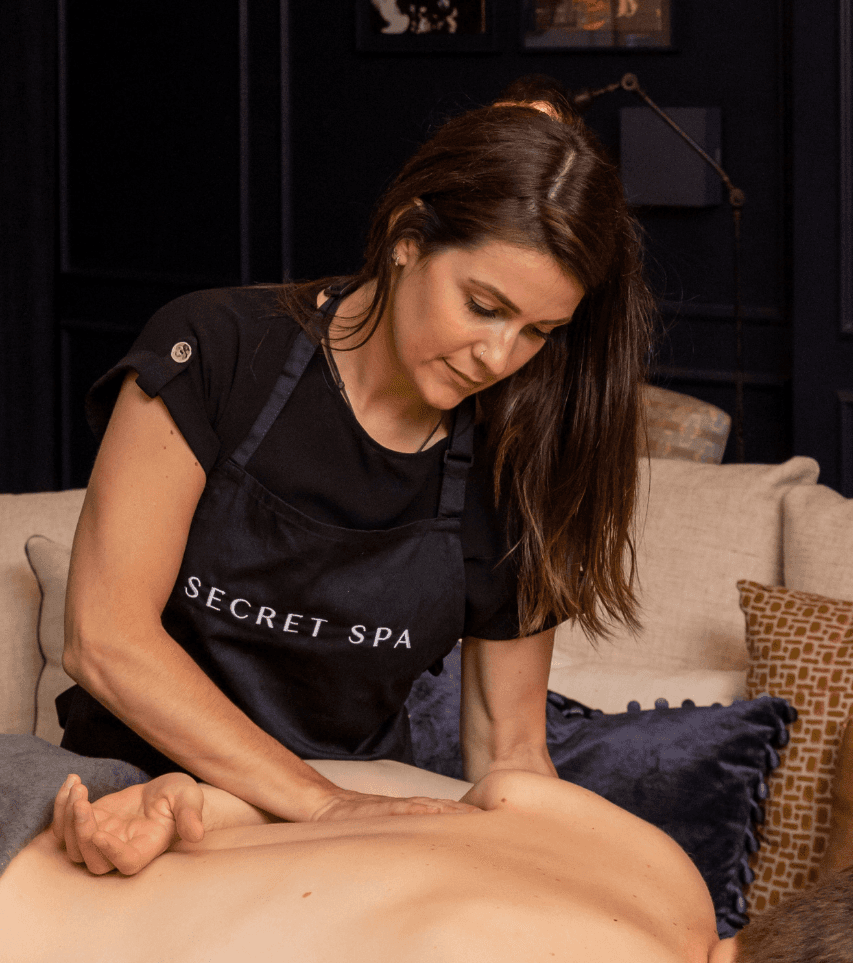A guide to getting your hair coloured
Oct 27, 2020

Whether you’re a hair-dying newbie, or have questions about coloured hair maintenance, highlights, balayage or how to look after coloured hair, we’ve got the information you need. Here at Secret Spa, we have recently added a range of hair colouring options to our at-home hairdressing service. We’ve written the below guide so that you can feel confident with your coloured hair.
Hair colour application techniques
First up, let’s explain the different types of hair colour techniques that you can choose from:
Full colour
Full colour hair is simply a one-step process which uses a single shade to colour your complete head of hair. It relies on your own underlying tones to create depth and variation. You can choose between semi-permanent hair dye that will wash out over several washes, and permanent which won’t wash out at all over time (although it may fade).
This is perhaps the simplest of hair colour application techniques. It is applied in much the same way as a deep conditioning treatment, and then washed off.
Root tint
If you’ve had a full colour in the past and your roots have grown through, a root tint is the solution to getting back to a complete look again. The roots are coloured to the same colour as before.
Balayage
Balayage is a hugely popular and eye-catching way of colouring your hair. The idea is to create a seamless graduation from darker hair on top down to much lighter ends. What’s great about balayage is that it easily allows for new growth without creating the unintentional roots look, as the top is always intended to be darker. Additionally, you can build up the intensity of it over time. Ombré is a much more obvious effect but still similar to balayage.
Balayage is applied using a brush similar to a paint brush.
Highlights
Highlights apply permanent hair colour to parts of your hair. The effect is that lightened areas really stand out. As your natural hair loses its variation in shades over time, and grey becomes more prominent, highlights enable you to make the most of different hues and bring life back into your look.
Lowlights
Lowlights are similar to highlights but instead of lightening sections of your hair, those sections are coloured in a more natural shade which compliments your natural shade. This creates a shadow effect that again adds depth to your overall look. Lowlights offer a more natural finish.
Both highlights and lowlights are available in three different levels:
Full highlights/lowlights: Highlights or lowlights are applied to your whole head of hair.
Half highlights/lowlights: Half head highlights or lowlights focus on applying colour to around half of your total hair, usually focusing on the areas around the front, shaping your face.
T-section highlights/lowlights: These highlights or lowlights cover around a quarter of your hair, focusing on the top and crown. These are suitable for if your previous highlights/lowlights are growing out and you want to get rid of the roots look.
Highlights and lowlights are also applied using a brush, but the hair colourist will use foils to prevent the die touching areas which are not being coloured.
FAQs about hair colouring
You won’t be alone in having lots more questions about hair colouring. Here we answer the most common hair colouring questions.
Does permanent hair colour wash out?
There’s quite a lot of confusion here because different terms are used. Generally speaking, a permanent hair colour is exactly that – permanent. No matter how many times you wash your hair, the colour will remain.
However, it may fade or change shade slightly over time. New growth will also stand out starkly against the coloured hair. The solution to this is a root tint. Another option is to have a hair glossing treatment between colours.
You can also opt for other dyes which come with a range of permanency. These are often called semi-permanent. They are designed to wash out after a certain number of washes. With these colours you are unlikely to get real intensity and vibrancy of colour.
Is it safe to colour your hair?
A professionally trained hair colourist will ensure your safe treatment. However, it is always worth getting a patch test completed first. A patch test will ensure you have a small exposure to the hair dye before it is used in greater quantities. Therefore, in the rare instance that the hair dye causes an allergic reaction, or even doesn’t bring about the colour you desire, it is discovered before it is used extensively.
Is it safe to colour your hair during pregnancy?
The NHS advises that it is considered safe to colour your hair in pregnancy. Only very small amounts of the chemicals reach your bloodstream. Studies show it takes far higher amounts of the chemicals in your blood to cause harm, than even the most diligent hair colouring routine would involve!
However, do bear in mind that your hair may change during pregnancy even without hair colouring. It may develop a curl when it was previously straight, or change shade. Again, it’s always worth having a patch test done before a hair colour treatment, even if you’ve had colour applied before pregnancy.
Can you colour highlighted hair?
You can colour previously coloured hair. You will need to take a little more care about colours. Previously coloured hair is likely to react differently to hair dye than natural coloured hair. This is particularly the case with highlighted hair which uses bleach to lighten it.
Very importantly, make sure you have a patch test before colouring highlighted hair. This will help you to see a true representation of the colour. Toner treatment may also help to fine tune your preferred colour.
Can hair dye damage your hair?
Hair dying is known to make hair drier and sometimes brittle. It is sensible to know how to look after your hair both before and after it is coloured.
A deep conditioning mask, used before a hair colour treatment, can help to protect the hair. After having your hair coloured, you may also want to choose a conditioner which is specifically designed for coloured hair. This will help to combat the dryness that can occur. Also avoid over-colouring. Only get treatments done as regularly as your colourist recommends.
Dryness tends to concentrate on the ends. It’s worth having regular trims to remove the dry ends of coloured hair. We offer this as an additional at-home hairdressing service which you can have at the same time as your colour. Additionally, Olaplex and Smartbond treatments can help prevent damage from colouring.
Hair colouring at home
Enjoy your hair colouring treatment and full hairdressing services at home with Secret Spa.
Book our
experts today
Related Articles
What is a Brazilian Blow Dry?
Jun 1, 2020
What hair colour suits me? Tips for choosing a hair colour
Mar 21, 2025
All you need to know about hair botox
Sep 14, 2022
Tips for making your blow dry last longer
Jun 15, 2021
How to care for bleached and dyed hair
Sep 7, 2021
What are the different types of hair dye and colour techniques?
Jan 4, 2021






